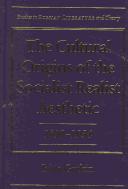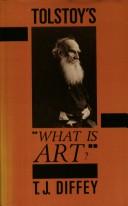| Listing 1 - 10 of 20 | << page >> |
Sort by
|
Book
Abstract | Keywords | Export | Availability | Bookmark
 Loading...
Loading...Choose an application
- Reference Manager
- EndNote
- RefWorks (Direct export to RefWorks)
Book
ISBN: 3846751219 Year: 2013 Publisher: Paderborn : Wilhelm Fink Verlag,
Abstract | Keywords | Export | Availability | Bookmark
 Loading...
Loading...Choose an application
- Reference Manager
- EndNote
- RefWorks (Direct export to RefWorks)
Neben der bekannten formalistischen Verfremdungsästhetik entwickelt sich in der Sowjetunion der 1920er Jahre eine phänomenologische Formphilosophie im engen institutionellen Verbund mit empirischen Ansätzen. Intermedialität und Interdisziplinarität standen in der »Staatlichen Akademie für Kunstwissenschaften« (»Gosudarstvennaja Akademija Chudožestvennych Nauk«) sowie im Leningrader »Staatsinstitut für Kunstgeschichte« (»Gosudarstvennyj institut istorii iskusstv«) auf der Tagesordnung. Der Band stellt dem deutschsprachigen Publikum das Spektrum dieser Ansätze erstmals im Überblick vor.
Book
ISBN: 3846753696 Year: 2013 Publisher: Paderborn : Wilhelm Fink Verlag,
Abstract | Keywords | Export | Availability | Bookmark
 Loading...
Loading...Choose an application
- Reference Manager
- EndNote
- RefWorks (Direct export to RefWorks)
Anders als die Theoriekonzepte Michail Bachtins und Jurij Lotmans hat die russische Literaturtheorie der Historischen Poetik bislang kaum Resonanz in Westeuropa gefunden. Doch was die Gründungsväter Aleksandr Veselovskij (1838–1906) und Victor Žirmunskij (1891–1971) wie ihre Nachfolger als ›Historische Poetik‹ konzipierten, nimmt auch heute noch einen bedeutenden Stellenwert innerhalb der russischen Literaturwissenschaft ein. Entstanden in einer Phase extrem breiter Vernetzung der europäischen Literaturwissenschaften blieb und bleibt die Historische Poetik auch international anschlussfähig.

ISBN: 081011545X Year: 1999 Publisher: Evanston (Ill.) : Northwestern university press,
Abstract | Keywords | Export | Availability | Bookmark
 Loading...
Loading...Choose an application
- Reference Manager
- EndNote
- RefWorks (Direct export to RefWorks)
Aesthetics, Modern --- Aesthetics, Russian --- Socialist realism.
Book
ISBN: 8680267627 Year: 2004 Publisher: Belgrad : Filologiceskij fakul'tet Belgradskogo universiteta,
Abstract | Keywords | Export | Availability | Bookmark
 Loading...
Loading...Choose an application
- Reference Manager
- EndNote
- RefWorks (Direct export to RefWorks)
Aesthetics, Russian. --- Russian literature --- History and criticism.

ISBN: 0709908911 Year: 1985 Publisher: London, Dover, N.H. : Croom Helm,
Abstract | Keywords | Export | Availability | Bookmark
 Loading...
Loading...Choose an application
- Reference Manager
- EndNote
- RefWorks (Direct export to RefWorks)
Aesthetics, Russian --- Esthétique russe --- Tolstoy, Leo, --- Aesthetics. --- Esthétique russe
Book
ISBN: 5875501448 Year: 2001 Publisher: Novosibirsk : Sibirskij chronograf,
Abstract | Keywords | Export | Availability | Bookmark
 Loading...
Loading...Choose an application
- Reference Manager
- EndNote
- RefWorks (Direct export to RefWorks)
Aesthetics, Russian --- Literature and morals. --- Romanticism --- Romanticism --- Russian literature --- Religious aspects. --- History and criticism.
Book
ISBN: 0748647309 Year: 2015 Publisher: Edinburgh, Scotland : Edinburgh University Press,
Abstract | Keywords | Export | Availability | Bookmark
 Loading...
Loading...Choose an application
- Reference Manager
- EndNote
- RefWorks (Direct export to RefWorks)
Explores the influence of Russian aesthetics on British modernistsGBS_insertPreviewButtonPopup(['ISBN:9780748647293','ISBN:9780748647309']);In what ways was the British fascination with Russian arts, politics and people linked to a renewed interest in the unseen? How did ideas of Russianness and ‘the Russian soul’ - prompted by the arrival of the Ballets Russes and the rise of revolutionary ideals - attach themselves to the existing British fashion for theosophy, vitalism and occultism? In answering these questions, this study is the first to explore the overlap between Slavophilia and mysticism between 1900 and 1930 in Britain. The main Russian characters that emerge are Fedor Dostoevsky, Boris Anrep, Vasily Kandinsky, Petr Ouspensky and Sergei Eisenstein. The British modernists include Roger Fry, Virginia Woolf, Mary Butts, John Middleton Murry, Michael Sadleir and Katherine Mansfield. Key Features: Draws on unpublished archive material as well as on periodicals, exhibition catalogues, reviews, diaries, fiction and the visual artsAddresses the omission in modernist studies of the importance of Russian aesthetics and Russian discourses of the occult to British modernismChallenges the dominant Western European and transatlantic focus in modernist studies and provides an original contribution to our understanding of new global modernismsCombines literary studies with aesthetics, modernist history, the history of modern esotericism, film history, periodical studies and science studies"
Aesthetics, Russian --- 1900 - 1999 --- Great Britain --- Russia --- Great Britain. --- Russia. --- Civilization --- Foreign influences.
Book
ISBN: 2915854009 9782915854008 Year: 2005 Publisher: Paris Delga
Abstract | Keywords | Export | Availability | Bookmark
 Loading...
Loading...Choose an application
- Reference Manager
- EndNote
- RefWorks (Direct export to RefWorks)
Art and state --- Art, Modern --- Communism and art --- Aesthetics, Russian --- Art --- Communisme et art --- Esthétique russe --- Politique gouvernementale
Book
Year: 1976 Publisher: Moscou : Editions du Progrès,
Abstract | Keywords | Export | Availability | Bookmark
 Loading...
Loading...Choose an application
- Reference Manager
- EndNote
- RefWorks (Direct export to RefWorks)
Criticism --- Aesthetics, Russian --- Russian literature --- Critique --- Esthétique russe --- Littérature russe --- History and criticism --- Histoire et critique
| Listing 1 - 10 of 20 | << page >> |
Sort by
|

 Search
Search Feedback
Feedback About UniCat
About UniCat  Help
Help News
News